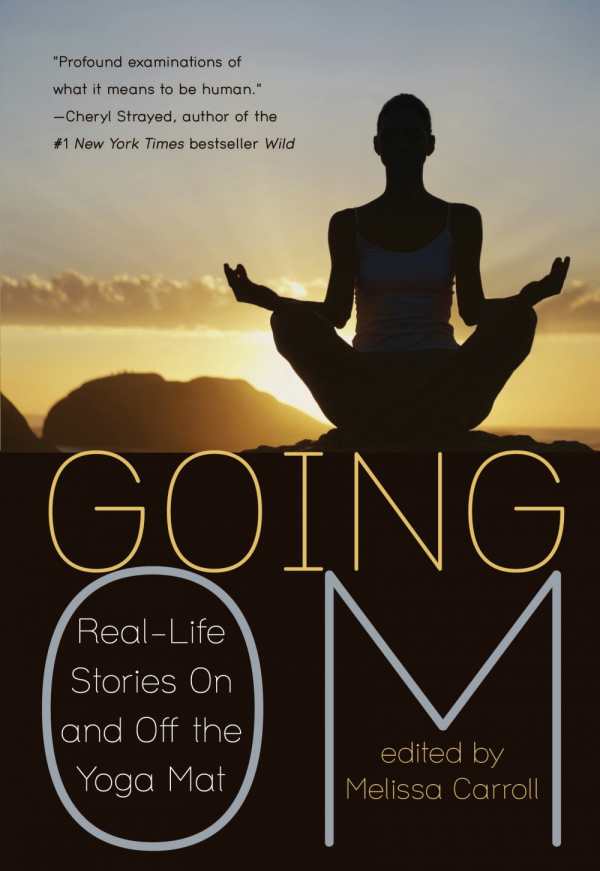Going Om
Real-Life Stories On and Off the Mat
- 2014 INDIES Finalist
- Finalist, Body, Mind & Spirit (Adult Nonfiction)
Going Om makes yoga approachable, and it’s an inspiring and insightful read.
Going Om: Real-Life Stories On and Off the Yoga Mat reflects on the practice of applying yoga to everyday life. Edited by Melissa Carroll, this volume consists of essays by contributors who identify first as writers, then as yogis. Thus, Going Om does not take a deep historical look at the ancient philosophy and physical practice, but rather offers humor, sarcasm, solemnity, and occasional discomfort as each narrator tells a yoga-related story.
The book cover serves as the first hook, exuding peace and tranquility: sun setting behind a black silhouette atop a mountain in a cross-legged pose with fingers in a traditional mudra; warm colors and modest font.
A volume of sixteen essays split equally into four sections—“Breath,” “Balance,” “Sweat,” “Let Go”—Going Om offers a gentle introduction to the world of yoga. In the opening essay, Ira Sukrungruang discovers a link between his 375-pound body and his mind, shattering the idea that yoga is only for contortionists in colorful spandex. Carroll’s choice to open with this essay and begin the book with the “Breath” section rather than “Sweat” sends a clear message: this is not a book about doing yoga; it is a book about living yoga.
Once past the visual distraction of a double indent at the beginning of each paragraph instead of a single indent, the book becomes easy and enjoyable to digest. Narratives range from mentioning yoga in periphery to emphasizing yoga as a focal point, doing an excellent job of showing how to use yoga techniques and practices in day-to-day life as a means rather than an end. The collection opens important dialogue about conflicting ideas within the yoga community, such as the use of medication and the sexiness of yoga, and debunks the notion that yoga is strictly mental, strictly spiritual, or strictly physical.
As a mind-body discipline often used as a spiritual supplement to religion, yoga has especially deep roots in both Hinduism and Buddhism, among other Eastern practices. However, Going Om does not touch on Hinduism, though there are mentions of Buddhism, Judaism, and Christianity in relation to yoga practice. Yoga alone is not religion, so a false line in Claire Dederer’s essay that “yoga is of course a religion” stands out. With the book’s appeal to a general audience, this statement can unfortunately mislead those less well-versed in the origins or general history of yoga.
That being said, Going Om offers a refreshing view of yoga outside of this traditional context and makes the ancient practice more accessible to the hesitant Westerner. Amy Monticello mentions the abundance of yoga in Ithaca, or “Mythaca,” New York, as she examines writing as a form of meditation; Alan Shaw muses on “Broga” for men; Adriana Páramo uses breathing techniques to calm herself in the midst of her stepdaughter’s wedding.
The compilation of varied voices allows for a varied audience as each essay has a different takeaway. Going Om makes yoga approachable and relatable. It’s an inspiring and insightful read for yoga practitioners and nonpractitioners alike.
Reviewed by
Genevieve Shifke Ali
Disclosure: This article is not an endorsement, but a review. The publisher of this book provided free copies of the book and paid a small fee to have their book reviewed by a professional reviewer. Foreword Reviews and Clarion Reviews make no guarantee that the publisher will receive a positive review. Foreword Magazine, Inc. is disclosing this in accordance with the Federal Trade Commission’s 16 CFR, Part 255.

